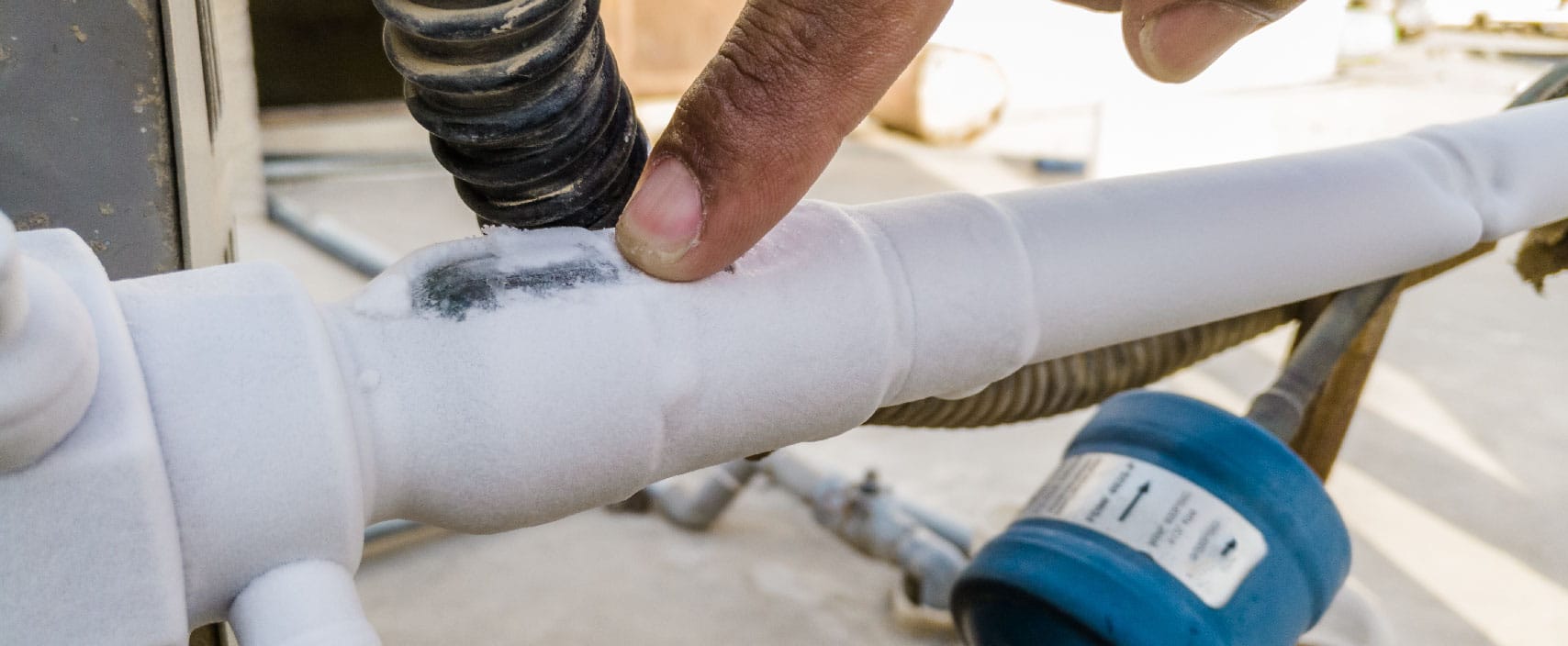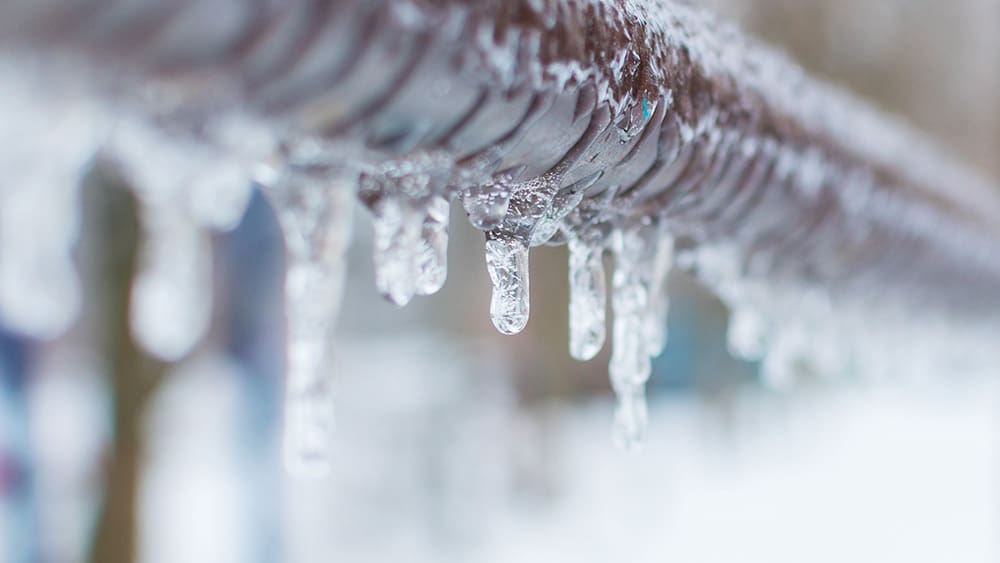We've unearthed this great article relating to Why Is Ice On My Outside Air Conditione directly below on the internet and believe it made perfect sense to relate it with you here.

Intro
Finding that your air conditioning pipe is iced up can be worrying, especially throughout warm summer season when you count on your air conditioning system one of the most. Comprehending what to do in such a scenario is important to prevent more damage to your air conditioning system and ensure your convenience inside your home.
Understanding the Causes
A number of factors can add to the freezing of an air conditioner pipe. Recognizing these reasons can help you attend to the issue successfully.
Absence of Airflow
One common root cause of an icy air conditioner pipe is inadequate airflow. When the airflow over the evaporator coil is restricted, it can trigger the coil to go down below freezing temperature level, leading to ice formation on the pipeline.
Reduced Refrigerant Levels
Not enough cooling agent levels in your air conditioning system can likewise lead to an icy pipe. Low cooling agent degrees can trigger the stress in the system to go down, bring about the cold of wetness on the evaporator coil.
Cold Weather Conditions
In colder climates, freezing temperature levels outside can add to the cold of AC pipelines. If your a/c unit is not correctly insulated or if there are leakages in the ductwork, chilly air can infiltrate the system, triggering the pipeline to freeze.
Dirty Air Filters
Dirty or clogged air filters can limit airflow in your air conditioner system, bring about numerous issues, consisting of a frozen pipeline. It's vital to replace or clean your air filters frequently to make sure correct air flow and protect against ice buildup.
Indications of a Frozen A/c Pipe
Identifying the signs of an icy air conditioner pipe is important for prompt action.
Decreased Airflow
If you observe a significant decrease in airflow from your vents, it could show an icy pipeline.
Ice Buildup on the Pipe
Noticeable ice accumulation on the refrigerant line or the evaporator coil is a clear indication of an icy air conditioning pipe.
Strange Sounds from the Unit
Uncommon noises, such as hissing or bubbling, originating from your air conditioning system can signal that there's ice existing on the pipe.
Immediate Actions to Take
When confronted with a frozen AC pipeline, it's important to act swiftly to stop more damages to your cooling system.
Switching off the air conditioner
The very first step is to shut off your air conditioner to avoid the system from running and exacerbating the issue.
Checking for Blockages
Examine the area around the indoor unit for any kind of blockages that might be blocking airflow, such as furnishings or curtains.
Thawing the Pipe
You can use mild approaches like placing towels taken in warm water around the icy pipeline to aid thaw it gradually.
Preventive Measures
Taking safety nets can help avoid future events of an icy air conditioner pipeline.
Normal Maintenance Checks
Arrange routine maintenance consult a professional HVAC technician to make sure that your air conditioning system is running efficiently.
Transforming Air Filters
Frequently replace or cleanse your air filters to prevent air movement restrictions and preserve optimal efficiency.
Shielding Exposed Pipes
If your a/c pipelines are subjected to chilly temperatures, take into consideration protecting them to avoid cold during cold weather.
Seeking Professional Help
If DIY techniques fall short to fix the concern or if you're uncertain regarding how to proceed, it's ideal to look for help from a qualified HVAC technician.
When DIY Methods Fail
If your efforts to thaw the pipeline or address various other issues are not successful, it's time to hire a professional.
Importance of Hiring a Professional HVAC Technician
A certified HVAC service technician has the knowledge and tools necessary to identify and fix concerns with your air conditioner system safely and efficiently.
Final thought
Dealing with an icy air conditioner pipeline can be a frustrating experience, yet understanding exactly how to respond can assist lessen damage and recover convenience to your home. By comprehending the reasons, acknowledging the indicators, and taking punctual action, you can successfully resolve the concern and protect against future occurrences.
G UP? HOW TO FIX IT?
It happens all over America. And the rest of the world probably. It’s the hottest day ever and for some darn reason your AC isn’t cooling the house. You fiddle with the thermostat to try and fix the problem. Nada. All you can do now is go outside and check the AC unit. You make your way there and find your air conditioner unit is frozen! But how?
In this post we’ll cover how you can tell that your air conditioner has frozen (other than the obvious reasons), what could have caused the freeze, and some of the things you can do about your AC freezing up. And if you have a frozen heat pump condenser, read our blog about it to learn what to do! But remember, it is always best to avoid your AC freezing up with an AC tune up. And if you are moving into a home, it's critical to get HVAC inspection so that you are aware of an AC problems before you move in.
Keep reading and you may be able to fix the frozen AC yourself. If you can’t, call an HVAC specialist. If you live in Maryland, call SuperTech HVAC for AC repair. We’ll take care of it.
How Does An Air Conditioning Unit Work?
How you probably imagine an AC works is wrong. Contrary to popular belief, an AC system does not inject cool air into a building. Instead, it removes the heat from inside and transfers it outside. Cool huh? (Pun intended).There are 4 major components among the 3 stations of an air conditioning system: the evaporator coil, the compressor, the condenser, and the refrigerant – a special chemical that links everything together through a closed loop system.
Station 1:
Warm indoor air is sucked into the return vent, through a filter, and blows over the evaporator coil. The heat is absorbed into the cold refrigerant, turning it from liquid to gas. The air, which is now cool, is blown back into the home to areas that your thermostat, i.e. you, has decided.
Station 2:
The refrigerant makes its way outside the house to the compressor, which squeezes the warm refrigerant, raising its gaseous temperature even more.
Station 3:
When the super hot vapor refrigerant reaches the condenser, the last step, the heat is expelled and absorbed into the outdoor air. The refrigerant instantly cools, which changes it from gas back to liquid form. The cold liquid refrigerant is now ready to return to station 1 and repeat the process.
Is Your AC Freezing Up? Here Are The Signs:
As you may have guessed, your air conditioner unit freezing up on a hot day is not normal.
If this happens, there's no need to panic. Often the issue can be solved with a little troubleshooting. If the AC unit is left frozen for too long however, you may find yourself with a bigger problem.
First things first, how do you know your AC is frozen?
Well, the obvious sign is the ice on your refrigerant line-set pipe. Simply check between your outdoor AC unit and your home's exterior wall to see whether your AC line frozen.
You might also have a frozen evaporator coil. This one's not as easy to check. You'll need to open a panel on the indoor unit to inspect. Don't do this unless you're handy. If you aren't, call an HVAC pro like SuperTech HVAC or you may damage something in the process.

We hope you enjoyed reading our section on Why Is Ice On My Outside Air Conditione. Thanks a lot for taking time to read our blog post. Do you know about someone else who is inquisitive about the subject? Feel free to share it. Thank you so much for taking the time to read it.
This Post